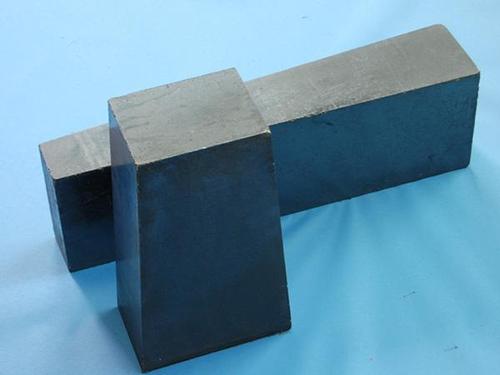- 27
- Jan
The production process of magnesia carbon refractory bricks
Proses produksi magnesia carbon refractory bricks
bahan baku
The main raw materials of MgO-C bricks include fused magnesia or sintered magnesia, flake graphite, organic binders and antioxidants.
magnesia
Magnesia is the main raw material for the production of MgO-C bricks, which can be divided into fused magnesia and sintered magnesia. Compared with sintered magnesia, fused magnesia has the advantages of coarse periclase crystal grains and large particle volume density. It is the main raw material used in the production of magnesia carbon bricks. The production of ordinary magnesia refractories requires high-temperature strength and corrosion resistance for magnesia raw materials. Therefore, attention is paid to the purity of magnesia and the C/S ratio and B2O3 content in the chemical composition. With the development of the metallurgical industry, the smelting conditions are becoming more and more demanding. In addition to the chemical composition, the magnesia used in the MgO-C bricks used in the metallurgical equipment (converter, electric furnace, ladle, etc.) requires high density and Great crystallization.
Sumber karbon
Whether in traditional MgO-C bricks or low-carbon MgO-C bricks that are used in large quantities, flake graphite is mainly used as its carbon source. Graphite, as the main raw material for the production of MgO-C bricks, mainly benefits from its excellent physical properties: ① non-wetting to slag. ②High thermal conductivity. ③Low thermal expansion. In addition, graphite and refractory materials do not eutectic at high temperatures, and have high refractoriness. The purity of graphite has a greater impact on the performance of MgO-C bricks. Generally, graphite with a carbon content of more than 95%, and very good, more than 98% should be used.
In addition to graphite, carbon black is also commonly used in the production of magnesia carbon bricks. Carbon black is a highly dispersed black powdery carbonaceous material produced by the thermal decomposition or incomplete combustion of hydrocarbon hydrocarbons. The carbon black has fine particles (less than 1μm), large specific surface area, and the mass fraction of carbon is 90~ 99%, high purity, high powder resistivity, high thermal stability, low thermal conductivity, it is difficult to graphitize carbon. The addition of carbon black can improve the spalling resistance of MgO-C bricks, increase the amount of residual carbon, and increase the density of the bricks.
Binding agent
Commonly used binders for the production of MgO-C bricks include coal tar, coal tar and petroleum pitch, as well as special carbon resins, polyols, pitch-modified phenolic resins, synthetic resins, etc. The binding agent used has the following types:
1) Asphalt substances. Tar pitch is a kind of thermoplastic material. It has the characteristics of high affinity with graphite and magnesium oxide, high residual carbon rate after carbonization, and low cost. It has been used in large quantities in the past; but tar pitch contains carcinogenic aromatic hydrocarbons, especially the content of benzophthalone. High; due to the strengthening of environmental awareness, the use of tar pitch is now decreasing.

2) Resin substances. Synthetic resin is made by the reaction of phenol and formaldehyde. It can mix well with refractory particles at room temperature. After carbonization, the residual carbon rate is high. It is currently the main binder for the production of MgO-C bricks; but it is formed after carbonization. The glassy network structure is not ideal for the thermal shock resistance and oxidation resistance of refractory materials.
3) On the basis of asphalt and resin, the substance obtained after modification. If the bonding agent can be carbonized to form an inlaid structure and form carbon fiber material in situ, then this bonding agent will improve the high temperature performance of the refractory material.
Antioksidan
In order to improve the oxidation resistance of MgO-C bricks, a small amount of additives are often added. Common additives are Si, Al, Mg, Al-Si, Al-Mg, Al-Mg-Ca, Si-Mg-Ca, SiC, B4C , BN and very recently reported Al-BC and Al-SiC-C additives [5-7]. The principle of action of additives can be roughly divided into two aspects: On the one hand, from the perspective of thermodynamics, that is, at working temperature, additives or additives react with carbon to form other substances, and their affinity for oxygen is greater than that of carbon and oxygen. , It takes precedence over carbon to be oxidized to protect carbon; on the other hand, from the perspective of kinetics, the chemical Density, block pores, hinder the diffusion of oxygen and reaction products, etc.
